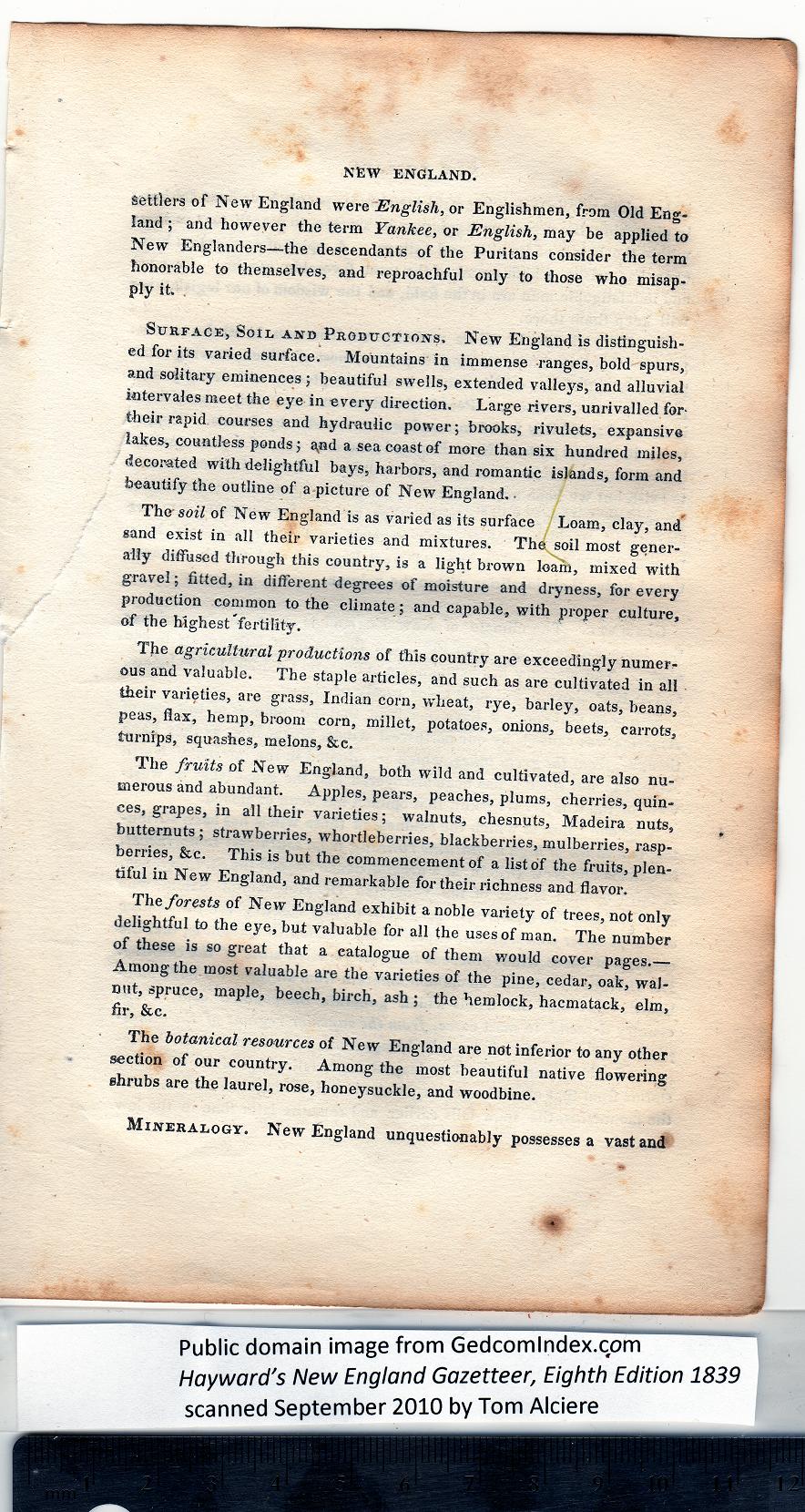|
NEW ENGLAND.
settlers of New England were English, or Englishmen, from Old Eng-
land ; and however the term Yankee, or English, may be applied to
New Englanders—the descendants of the Puritans consider the term
honorable to themselves, and reproachful only to those who misap-
ply it.
Surface, Soil and Productions. New England is distinguish-
ed for its varied surface. Mountains in immense ranges, bold spurs,
and solitary eminences; beautiful swells, extended valleys, and alluvial
intervales meet the eye in every direction. Large rivers, unrivalled for
their rapid courses and hydraulic power; brooks, rivulets, expansive
lakes, countless ponds j a,nd a sea coast of more than six hundred miles,
decorated with delightful bays, harbors, and romantic islands, form and
beautify the outline of a picture of New England..
The- soil of New England is as varied as its surface Loam, clay, and
sand exist in all their varieties and mixtures. The soil most gener-
ally diffused through this country, is a light brown loam, mixed with
gravel; fitted, in different degrees of moisture and dryness, for every
production common to the climate; and capable, with proper culture,
of the highest fertility.
The agricultural productions of this country are exceedingly numer-
ous and valuable. The staple articles, and such as are cultivated in all
their varieties, are grass, Indian corn, wheat, rye, barley, oats, beans,
peas, flax, hemp, broom corn, millet, potatoes, onions, beets, carrots,
turnips, squashes, melons, See.
The fruits of New England, both wild and cultivated, are also nu-
merous and abundant. Apples, pears, peaches, plums, cherries, quin-
ces, grapes, in all their varieties; walnuts, chesnuts, Madeira nuts,
butternuts ; strawberries, whortleberries, blackberries, mulberries, rasp-
berries, &c. This is but the commencement of a list of the fruits, plen-
tiful in New England, and remarkable for their richness and flavor.
The forests of New England exhibit a noble variety of trees, not only
delightful to the eye, but valuable for all the uses of man. The number
of these is so great that a catalogue of them would cover pages.—
Among the most valuable are the varieties of the pine, cedar, oak, wal-
nut, spruce, maple, beech, birch, ash ; the hemlock, hacmatack, elm,
fir, &c.
The botanical resources of New England are not inferior to any other
section of our country. Among the most beautiful native flowering
shrubs are the laurel, rose, honeysuckle, and woodbine.
Mineralogy. New England unquestionably possesses a vast and
PREVIOUS PAGE ... NEXT PAGE
This page was written in HTML using a program written in Python 3.2 and image-to-HTML text generated by ABBYY FineReader 11, Professional Edition.
|
